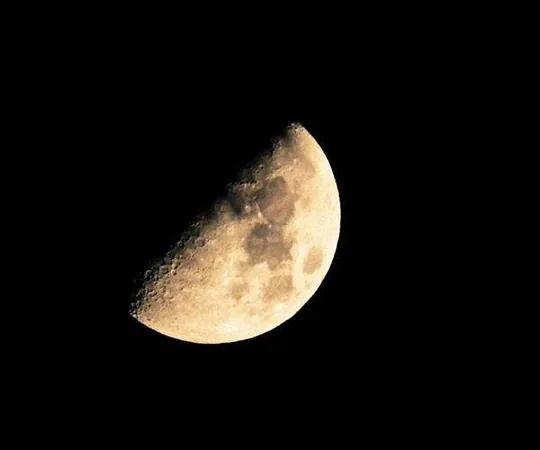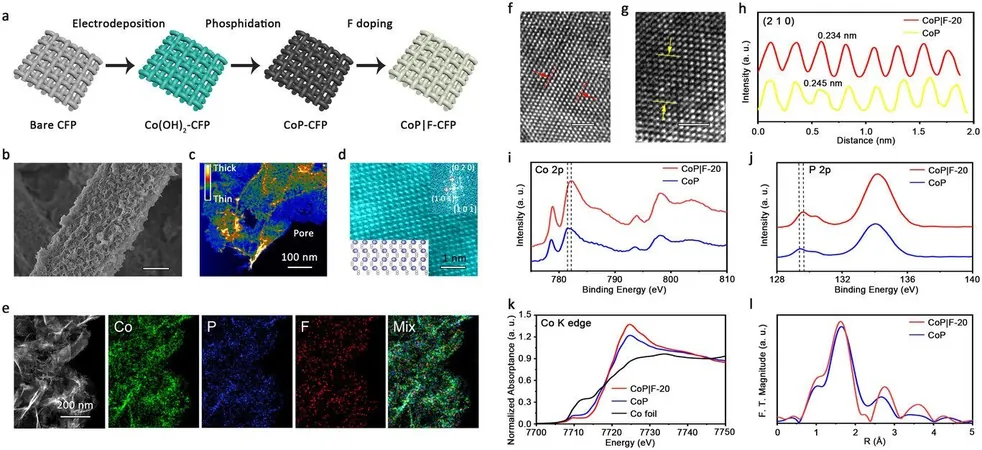
NASA's Groundbreaking Use of Moonlight to Revolutionize Earth Monitoring
2025-04-13
Author: Li
NASA Transforms the Moon into a Unique Observatory
In a remarkable feat of engineering and science, NASA’s ER-2 aircraft flew high above the clouds in March 2025, utilizing the gentle glow of a waxing Moon to support the Airborne Lunar Spectral Irradiance (air-LUSI) mission from Armstrong Flight Research Center in Edwards, California.
Harnessing Moonlight for Earth Observation
Equipped with a state-of-the-art spectroradiometer, the air-LUSI project recorded moonlight across various wavelengths. By analyzing the Sun's reflected light bouncing off the Moon’s surface, researchers are fine-tuning the calibration of Earth-monitoring satellites to achieve unprecedented precision.
Principal investigator Kevin Turpie from NASA's Goddard Space Flight Center explains, "The Moon acts as a perfect reference point, helping satellites achieve consistent and accurate measurements of Earth’s vital processes, including weather, ecosystems, and ocean changes." With the Moon’s steady brightness, it serves as an ideal benchmark for satellite sensors.
A Bird's-Eye View from 70,000 Feet
Flying at an impressive altitude of nearly 70,000 feet, the ER-2 offers a unique perspective above 95% of Earth’s atmosphere. This high-flying vantage point allows for exceptionally clear measurements, ensuring minimal distortion from atmospheric interference.
Unmatched Accuracy and Cost Savings
"The air-LUSI measurements of the Moon are the most accurate to date," asserts NASA program scientist Kelsey Bisson. "This groundbreaking data not only enhances our understanding of Earth and its weather patterns but also offers a cost-effective strategy for calibrating satellites, reducing the need for expensive onboard reference devices."
Collaborative Innovation Across Borders
This ambitious initiative is a collaborative effort between NASA, the National Institute of Standards and Technology (NIST), the U.S. Geological Survey, the University of Maryland Baltimore County, and McMaster University in Canada. McMaster played a pivotal role in developing essential hardware for the mission, including the Autonomous Robotic Telescope Mount Instrument System and the High-Altitude Aircraft Mounted Robotic (HAAMR) telescope mount.
Andrew Gadsden, an associate professor at McMaster and co-investigator on this project, emphasized the excitement of transnational scientific collaboration, stating, "This partnership resulted in significant advancements in both engineering and scientific exploration."
A New Era in Lunar Observation
The successful operation of the HAAMR system signals a new chapter in airborne lunar observation. Co-investigator John Woodward IV highlights the importance of these "highest accuracy measurements" of lunar light, which are set to revolutionize Earth observation technologies.


 Brasil (PT)
Brasil (PT)
 Canada (EN)
Canada (EN)
 Chile (ES)
Chile (ES)
 Česko (CS)
Česko (CS)
 대한민국 (KO)
대한민국 (KO)
 España (ES)
España (ES)
 France (FR)
France (FR)
 Hong Kong (EN)
Hong Kong (EN)
 Italia (IT)
Italia (IT)
 日本 (JA)
日本 (JA)
 Magyarország (HU)
Magyarország (HU)
 Norge (NO)
Norge (NO)
 Polska (PL)
Polska (PL)
 Schweiz (DE)
Schweiz (DE)
 Singapore (EN)
Singapore (EN)
 Sverige (SV)
Sverige (SV)
 Suomi (FI)
Suomi (FI)
 Türkiye (TR)
Türkiye (TR)
 الإمارات العربية المتحدة (AR)
الإمارات العربية المتحدة (AR)